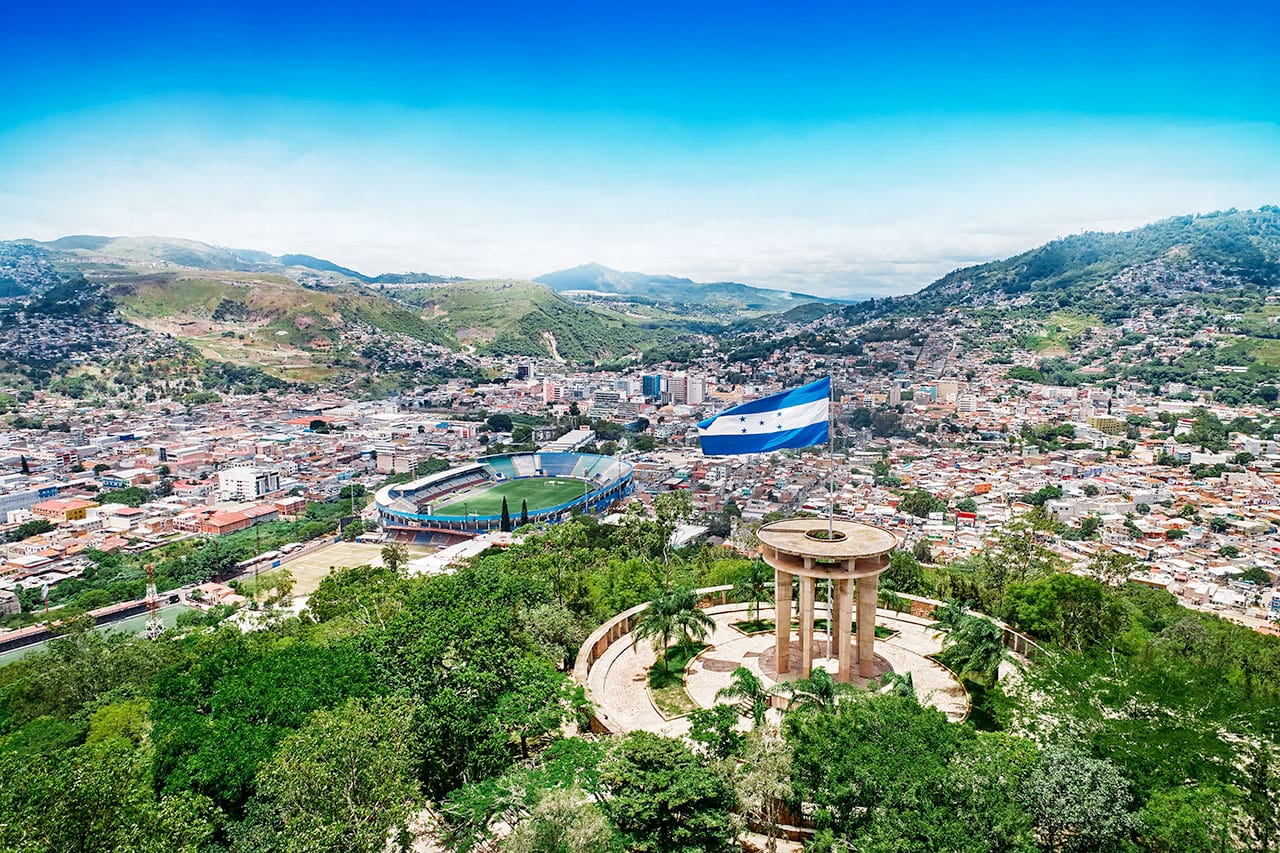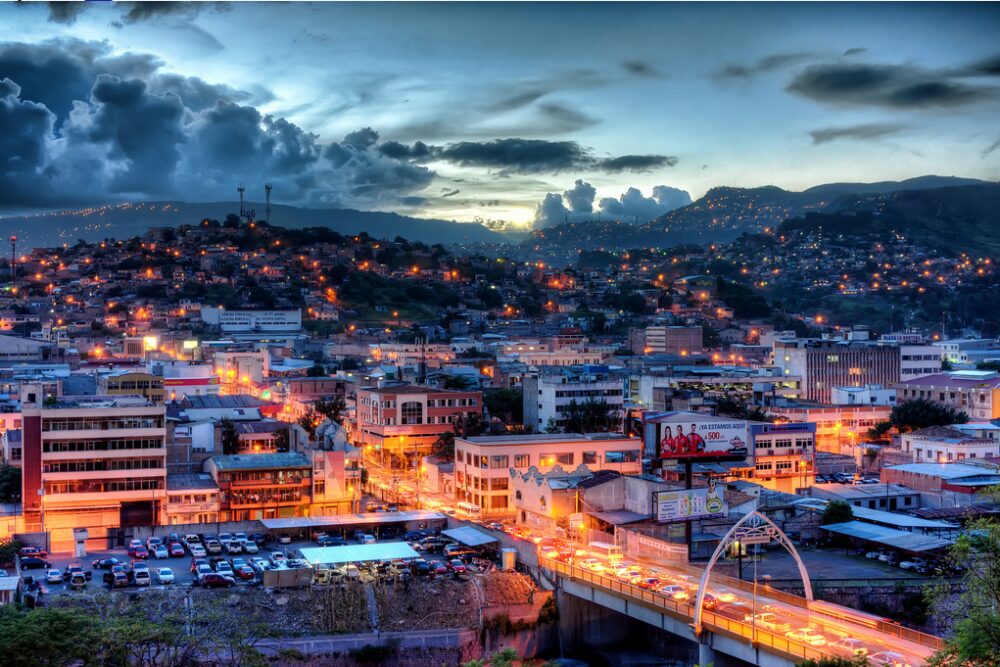Honduras Capital: Discover Tegucigalpa's Rich History & Culture!
Ever wondered about the heart of Honduras? Tegucigalpa, a city that pulses with life amidst rugged mountains, stands as the vibrant capital, a testament to the nation's rich history and resilient spirit. It’s a place where the echoes of the past harmonize with the rhythms of modern Honduras.
The story of Tegucigalpa is interwoven with the very fabric of Honduran identity. The city played a pivotal role during the struggle for independence from Spain in the early 19th century, a period of immense upheaval and transformation across Central America. Tegucigalpa served as the capital of Honduras from 1824 until 1880, a time when the nation was forging its own path. The administrative duties were later shared with Comayagüela, a neighboring city with its own unique history and character.
| Attribute | Details |
|---|---|
| Official Name | Tegucigalpa, Municipio del Distrito Central (Tegucigalpa, M.D.C.) |
| Colloquial Names | Tegus, Teguz |
| Country | Honduras |
| Status | Capital and Largest City |
| Sister City | Comayagüela |
| Elevation | 3,200 feet (975 meters) above sea level |
| Founded | September 29, 1578 |
| Became Capital | October 30, 1880 |
| Metropolitan Population (2022) | 1,526,660 |
| Climate | Tropical savanna climate |
| Key Features | Hilly terrain, surrounded by mountains, historical colonial buildings |
| Economic Activities | Industrial center, manufacturing (cloth, clothing, processed foods) |
| Tourist Attractions | La Tigra National Park (cloud forest), historical architecture |
| Government Website | https://www.tegucigalpa.gob.hn/ |
In 1898, a significant administrative reform took place: the two cities, Tegucigalpa and Comayagüela, were officially merged into one municipality. This unification solidified the role of the capital as we know it today, the heart of Honduran governance and culture.
- Phil Simmonds Corrie The Fascinating Journey Of A Soap Opera Legend
- Unleash Your Brain Power Discover The Best Free Crossword Puzzles
For those eager to delve deeper, resources abound. Visiting the definitions and notes page can provide a comprehensive description of each topic, clarifying the nuances of Honduran history and administrative structure.
The legal recognition of Tegucigalpa as a city arrived in 1821, a landmark moment in its development. Subsequently, in 1830, it ascended to the position of capital of Honduras, cementing its place in the nation's narrative.
The year 1998 brought immense hardship to Tegucigalpa, as it did to much of Honduras. Hurricane Mitch, a catastrophic natural disaster, unleashed its fury upon the country, leaving a trail of devastation in its wake. The city endured heavy deforestation, widespread floods, and devastating landslides. The damage extended far beyond the physical landscape, causing extensive loss of life and widespread property damage. The recovery from this event was a long and arduous process, testing the resilience of the Honduran people.
- Mirror Football News Your Ultimate Source For All Things Football
- Injuries Claim Solicitor Barnsley Your Trusted Legal Ally
Today, Tegucigalpa stands as a vibrant city, a testament to the spirit of its inhabitants. It is nestled amidst rugged mountains, a geographic feature that adds to its unique character and charm.
While Comayagüela shares the title of capital, the reality on the ground is somewhat different. Virtually all governmental institutions are concentrated on the Tegucigalpa side, effectively making Tegucigalpa the de facto capital. This concentration of power and administration further solidifies Tegucigalpa's central role in the Honduran state.
Comayagua, with its rich colonial heritage, holds the distinction of being the second capital of Honduras, a title that reflects its historical significance and architectural beauty.
Founded in 1537, Comayagua rapidly rose to prominence, eventually supplanting Gracias as the colonial capital of Honduras. This shift occurred after the capital of the Central American provinces was relocated from Gracias to Antigua Guatemala, marking a new chapter in the region's political landscape.
Tegucigalpa is not just a capital; it is the largest city in Honduras, a bustling metropolis that serves as the country's economic, cultural, and administrative hub.
The formal establishment of Tegucigalpa dates back to September 29, 1578. It officially became the capital on October 30, 1880, during the administration of President Dr. Marco Aurelio Soto, a pivotal moment in the city's trajectory.
For those seeking refuge in nature, La Tigra National Park offers a sanctuary of biodiversity. This cloud forest, the first of its kind in Honduras, is a haven for bird watchers, especially those hoping to catch a glimpse of the elusive quetzal. The park boasts an impressive array of avian life, encompassing 34 bird families and 171 species. Among these, 42 species are exclusive to cloud forests, while 27 are migratory species that utilize the area as a crucial stopover during their seasonal journeys.
The search for "capital of Honduras" can lead to various crossword puzzles and brain teasers. The answer, often a word with 11 letters, reflects the city's prominent place in popular culture and general knowledge.
Tegucigalpa, commonly known as "Tegus," is more than just a name on a map. It is the capital of Honduras, the seat of government, and the heart of the republic.
The city's importance is underscored by the presence of all the country's government buildings, solidifying its role as the center of Honduran political life.
As of 2022, Tegucigalpa boasts a total population of 1,526,660 people, a figure that reflects its status as a major urban center in Central America.
Tegucigalpa, often affectionately called “Tegus,” is the largest city in Honduras and serves as the country’s political and administrative center. Its role as the nucleus of Honduran governance cannot be overstated.
Comayagua's stint as the capital of Honduras concluded in 1880, when the seat of government was transferred to Tegucigalpa, a move that reshaped the country's political geography.
An ambitious project in 1888, a projected railroad line intended to connect the Caribbean coast to Tegucigalpa, ultimately fell short due to funding constraints, halting its progress in San Pedro Sula. This unfinished venture speaks to the challenges and aspirations of Honduras during that era.
Beyond its political significance, Tegucigalpa is also the administrative, cultural, educational, and economic center of the country, a multifaceted hub that drives Honduran progress.
Honduras, the nation of which Tegucigalpa is the capital, is a country located in Central America, a region rich in history, culture, and natural beauty.
Tegucigalpa, the capital of Honduras, lies on the Choluteca River, a waterway that has shaped the city's development and continues to be an integral part of its landscape.
Its location in a hilly region surrounded by mountains contributes to the city's unique character and offers stunning views.
As the largest city in Honduras, Tegucigalpa is a magnet for people from all corners of the country seeking opportunities and a better life.
Tegucigalpa plays a crucial role as one of the main industrial centers in Honduras, driving the country's economic growth.
Factories in the city produce a diverse range of goods, including cloth, clothing, and processed foods such as sugar, contributing to both domestic consumption and export markets.
The city is adorned with a plethora of interesting, albeit sometimes decaying, old colonial buildings, a testament to its rich history and architectural heritage. Many old stone streets wind intriguingly up steep hills, leading to hidden parks, stone steps, and charming old houses, offering glimpses into the city's past.
Formally, Tegucigalpa is known as Tegucigalpa, Municipio del Distrito Central, or Tegucigalpa, M.D.C.
Tegucigalpa, the city and capital of the Republic of Honduras, is situated on hilly terrain hemmed in by mountains, at an elevation of 3,200 feet (975 meters) above sea level, a setting that gives it a distinct charm and strategic advantage.
Tegucigalpa, located on a chain of mountains with a tropical savanna climate, stands as the capital and largest city of Honduras, a place of vibrant contrasts and rich cultural heritage.
Despite a constitutional provision for a joint capital with Comayagüela, Tegucigalpa functions as the de facto capital of Honduras, a reflection of its practical dominance in the country's administrative and political affairs.



Detail Author:
- Name : Mrs. Karelle Moore
- Username : rowe.leda
- Email : samanta52@spencer.org
- Birthdate : 1998-02-03
- Address : 944 Bednar Forks Parisianport, NJ 28972
- Phone : 223-656-1029
- Company : Runolfsdottir-Marks
- Job : Industrial-Organizational Psychologist
- Bio : Dolores labore voluptatem ab. Earum eum quia id sit nihil. A enim autem fugit. Minima rerum quia deserunt omnis sint sed dolore voluptates.
Socials
facebook:
- url : https://facebook.com/gardner.kerluke
- username : gardner.kerluke
- bio : Natus non voluptatem qui sed. Quod vero modi esse.
- followers : 6778
- following : 1889
tiktok:
- url : https://tiktok.com/@gardner_kerluke
- username : gardner_kerluke
- bio : Autem rerum et fugiat officiis vel quos. Perspiciatis iste qui sunt quis.
- followers : 2637
- following : 2829